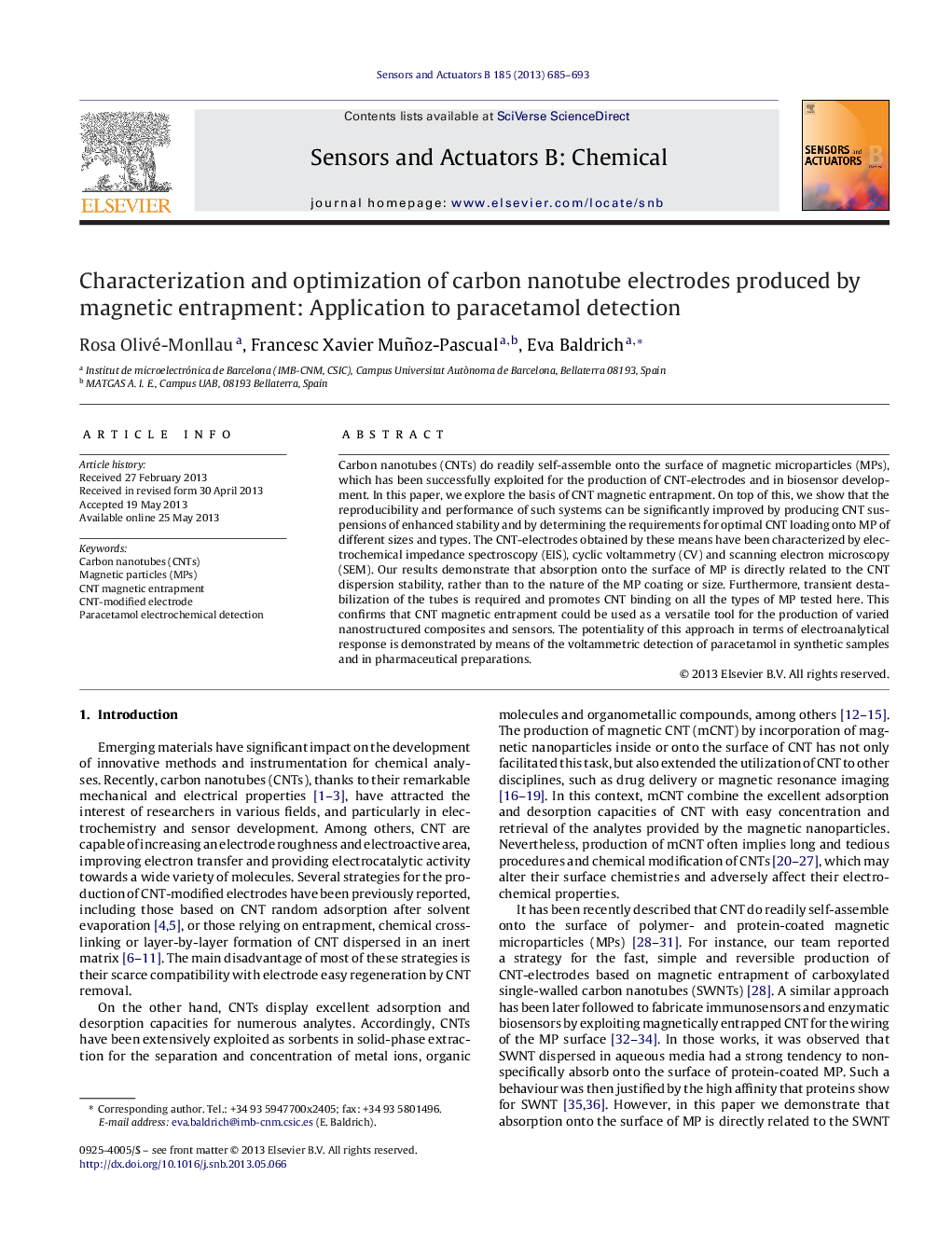| Article ID | Journal | Published Year | Pages | File Type |
|---|---|---|---|---|
| 7148896 | Sensors and Actuators B: Chemical | 2013 | 9 Pages |
Abstract
Carbon nanotubes (CNTs) do readily self-assemble onto the surface of magnetic microparticles (MPs), which has been successfully exploited for the production of CNT-electrodes and in biosensor development. In this paper, we explore the basis of CNT magnetic entrapment. On top of this, we show that the reproducibility and performance of such systems can be significantly improved by producing CNT suspensions of enhanced stability and by determining the requirements for optimal CNT loading onto MP of different sizes and types. The CNT-electrodes obtained by these means have been characterized by electrochemical impedance spectroscopy (EIS), cyclic voltammetry (CV) and scanning electron microscopy (SEM). Our results demonstrate that absorption onto the surface of MP is directly related to the CNT dispersion stability, rather than to the nature of the MP coating or size. Furthermore, transient destabilization of the tubes is required and promotes CNT binding on all the types of MP tested here. This confirms that CNT magnetic entrapment could be used as a versatile tool for the production of varied nanostructured composites and sensors. The potentiality of this approach in terms of electroanalytical response is demonstrated by means of the voltammetric detection of paracetamol in synthetic samples and in pharmaceutical preparations.
Related Topics
Physical Sciences and Engineering
Chemistry
Analytical Chemistry
Authors
Rosa Olivé-Monllau, Francesc Xavier Muñoz-Pascual, Eva Baldrich,
